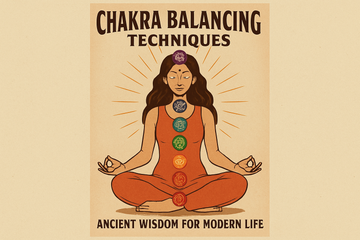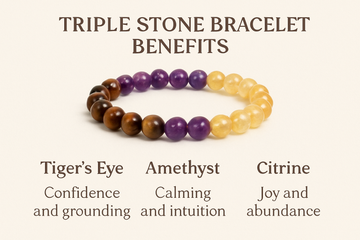Understanding the Ancient Foundation of Chakra Systems
The profound wisdom of chakra balancing techniques meditation practices emerges from millennia-old Sanskrit texts, where the word "chakra" translates to "wheel" or "disk." These energetic vortices represent spinning wheels of consciousness that govern our physical, emotional, and spiritual well-being. Ancient Vedic traditions recognized seven primary chakras aligned along the sushumna nadi, the central energetic channel coursing through our spine.
Modern practitioners increasingly embrace these time-honored methodologies as complementary wellness approaches. The sophisticated understanding of chakra systems originated within Hindu and Buddhist traditions, where accomplished yogis developed intricate maps of subtle energy anatomy. These luminous beings recognized that blockages or imbalances within chakric centers could manifest as physical ailments, emotional disturbances, or spiritual stagnation.
"The chakras are not merely theoretical concepts but living, breathing aspects of our energetic architecture that respond to conscious intervention through dedicated practice."
The Seven Primary Energy Centers
Each chakra corresponds to specific physiological systems, psychological attributes, and vibrational frequencies. The muladhara (root chakra) governs survival instincts and grounding energy. Svadhisthana (sacral chakra) influences creativity and sexual vitality. Manipura (solar plexus chakra) regulates personal power and digestive fire.
The anahata (heart chakra) orchestrates love and compassion, while vishuddha (throat chakra) facilitates authentic communication. Ajna (third eye chakra) awakens intuitive perception and inner wisdom. Finally, sahasrara (crown chakra) connects us to cosmic consciousness and divine unity.
Scientific Perspectives on Energy Medicine
Contemporary neuroscience and quantum physics increasingly validate ancient energetic concepts through measurable phenomena. Research demonstrates that meditation practices activate specific brain regions associated with self-awareness, emotional regulation, and stress reduction. The vagus nerve, a crucial component of our parasympathetic nervous system, mirrors the path described by traditional chakra maps.
Biofield measurements using specialized equipment detect electromagnetic variations around human bodies, particularly in regions corresponding to classical chakra locations. While mainstream medicine maintains cautious skepticism, integrative healthcare professionals recognize the therapeutic benefits of chakra-based interventions for holistic wellness.
Neuroplasticity and Energetic Awareness
The brain's remarkable capacity for reorganization supports the efficacy of chakra balancing techniques meditation practices. Regular meditation cultivates neuroplasticity, strengthening neural pathways associated with mindfulness, compassion, and emotional equilibrium. These measurable changes correlate with practitioners' subjective experiences of energetic balance and spiritual awakening.
Foundational Meditation Practices for Chakra Alignment
Establishing a consistent meditation routine forms the cornerstone of effective chakra work. Begin with basic breath awareness, observing the natural rhythm of inhalation and exhalation without forcing any particular pattern. This preliminary practice develops the mental stability necessary for more advanced energetic techniques.
Progressive relaxation methods prepare the physical body for subtle energy work. Systematically release tension from each body part, starting with the toes and ascending toward the crown of the head. This methodical approach creates optimal conditions for perceiving and directing pranic currents through the chakric network.
Visual Arts and Energetic Healing
The integration of visual aesthetics with chakra balancing techniques meditation practices offers profound therapeutic potential. Sacred geometry, mandalas, and color therapy have historically served as powerful tools for consciousness transformation. Contemporary artists continue this tradition by creating pieces that resonate with specific chakric frequencies and healing intentions.
Kaleidoscopic art forms particularly excel at inducing meditative states through their symmetrical patterns and vibrant color palettes. These dynamic visual experiences can facilitate deep relaxation, emotional release, and energetic alignment when incorporated into regular practice sessions.
The carefully curated selection of healing-oriented artwork provides practitioners with tangible focal points for their chakra balancing work. Each piece incorporates specific color frequencies and geometric patterns that correspond to different energy centers, supporting both novice and advanced meditators in their journey toward energetic harmony.
Comprehensive Collection of Energetic Tools
A holistic approach to chakra balancing benefits from diverse modalities and supporting materials. Sacred art collections featuring chakra-specific imagery, mandala designs, and healing color schemes create immersive environments conducive to deep practice. These visual anchors help maintain focus during meditation while simultaneously nourishing the subtle energy system.
The thoughtfully assembled collection encompasses various artistic expressions designed to support energetic wellness practices. From meditation-focused pieces to healing mandalas, each artwork serves as both aesthetic enhancement and functional tool for consciousness expansion.
Creating Sacred Space
Environmental factors significantly influence the effectiveness of chakra balancing techniques meditation practices. Designate a specific area exclusively for energetic work, incorporating elements that support each chakra's unique qualities. Natural crystals, aromatic incense, and carefully chosen artwork transform ordinary spaces into sanctuaries for spiritual practice.
Advanced Breathwork Techniques
Pranayama practices form the bridge between physical and subtle body awareness. The alternate nostril breathing technique (nadi shodhana) harmonizes the ida and pingala nadis, creating optimal conditions for kundalini awakening. Practice this method by closing the right nostril with the thumb, inhaling through the left nostril, then switching to exhale through the right nostril while closing the left.
The breath of fire (bhastrika pranayama) generates internal heat and activates dormant pranic forces. Perform rapid, forceful breaths through the nose while pumping the diaphragm vigorously. This dynamic practice energizes all chakras simultaneously while building pranayama capacity for sustained meditation sessions.
Chakra-Specific Breathing Patterns
Each energy center responds to particular respiratory rhythms and visualizations. Direct breath awareness to specific chakra locations while maintaining steady, rhythmic breathing patterns. The root chakra benefits from deep, grounding breaths that connect practitioners to earth energy, while the crown chakra responds to light, ethereal breathing that opens cosmic awareness.
Sound Healing and Vibrational Medicine
Sonic frequencies profoundly influence chakric activity through resonant vibrations that penetrate cellular structures. Traditional seed mantras (bija mantras) for each chakra create specific vibrational patterns that activate and balance corresponding energy centers. LAM for muladhara, VAM for svadhisthana, RAM for manipura, YAM for anahata, HAM for vishuddha, OM for ajna, and silence for sahasrara.
Tibetan singing bowls, crystal bowls, and tuning forks provide alternative sound healing modalities for chakra work. These instruments generate pure tones that bypass mental resistance and directly influence subtle energy patterns. Regular exposure to therapeutic frequencies can gradually dissolve energetic blockages and restore natural chakric flow.
Vocal Toning Practices
Self-generated sounds through vocal toning create internal resonance that stimulates chakric activity from within. Experiment with various vowel sounds, feeling their vibrations in different body regions. The "AH" sound resonates with the heart chakra, while "EE" activates the throat chakra. Sustained toning sessions develop sensitivity to subtle energy movements while strengthening vocal expression.
Movement-Based Chakra Activation
Physical movement serves as a powerful catalyst for energetic transformation when combined with mindful awareness. Yoga asanas specifically target individual chakras through spinal positioning, breathing patterns, and focused intention. Hip-opening poses like pigeon and butterfly activate the sacral chakra, while backbends such as camel and wheel open the heart center.
Dance meditation offers a more spontaneous approach to chakra activation through uninhibited movement expression. Allow the body to move naturally while focusing attention on different energy centers, permitting whatever movements arise without judgment or predetermined choreography.
Integration Practices for Daily Life
Sustainable chakra balancing extends beyond formal meditation sessions into everyday activities and interactions. Mindful awareness during routine tasks transforms mundane experiences into opportunities for energetic refinement. Notice which chakras feel activated or depleted during different activities, relationships, and environmental exposures.
Dietary choices significantly impact chakric balance through the vibrational qualities of various foods. Root vegetables and protein-rich foods support the root chakra, while orange-colored foods like carrots and oranges nourish the sacral chakra. Leafy greens activate the heart chakra, and purple foods such as eggplant and grapes stimulate the crown chakra.
Emotional Awareness and Chakric Responses
Developing sensitivity to emotional states and their corresponding chakric impacts enhances self-regulation capabilities. Fear and insecurity often manifest as root chakra contractions, while anger creates solar plexus tension. Cultivating emotional intelligence through chakra awareness provides valuable insights into personal energy patterns and healing priorities.
| Chakra | Associated Emotions | Balancing Practice |
|---|---|---|
| Root | Security, Grounding | Walking meditation, earthing |
| Sacral | Creativity, Pleasure | Hip circles, water imagery |
| Solar Plexus | Personal Power | Core strengthening, fire breath |
| Heart | Love, Compassion | Loving-kindness meditation |
| Throat | Expression, Truth | Chanting, journaling |
| Third Eye | Intuition, Wisdom | Visualization, meditation |
| Crown | Spiritual Connection | Silent meditation, prayer |
Troubleshooting Common Challenges
Practitioners frequently encounter obstacles during chakra balancing techniques meditation practices that require patience and skillful navigation. Overwhelming sensations during energy work often indicate the need for gentler approaches or shorter practice sessions. Gradual progression prevents energetic overload while building sustainable practice habits.
Lack of perceptible results may stem from unrealistic expectations or insufficient consistency in practice. Subtle energy changes often precede noticeable shifts in physical or emotional well-being. Maintaining regular practice schedules while cultivating patient observation yields more reliable outcomes than sporadic intensive efforts.
Frequently Asked Questions
- How long should I practice chakra meditation daily? Begin with 10-15 minutes and gradually increase duration based on comfort and availability.
- Can chakra imbalances cause physical symptoms? Many practitioners report correlations between chakric blockages and physical discomfort, though individual experiences vary significantly.
- Is it safe to work with all chakras simultaneously? Starting with one or two chakras allows for safer exploration before attempting full-system balancing.
- What should I do if I feel dizzy during practice? Immediately ground yourself through deep breathing, physical contact with earth, or consuming warm beverages.
The journey of chakra balancing techniques meditation practices offers profound opportunities for self-discovery and holistic healing. Ancient wisdom traditions provide time-tested methodologies that complement modern understanding of consciousness and well-being. Through consistent practice, mindful awareness, and patient cultivation, practitioners can experience the transformative benefits of balanced chakric flow in all aspects of life.






